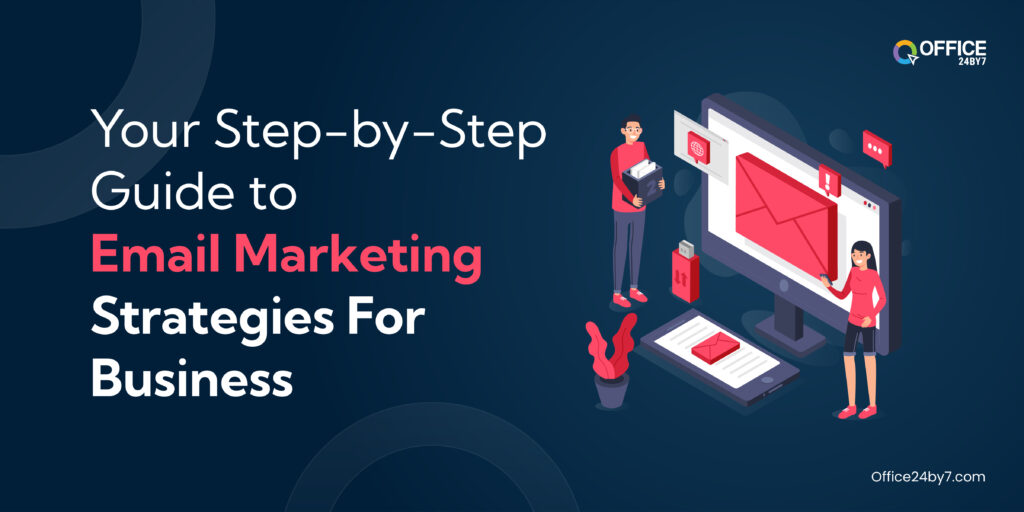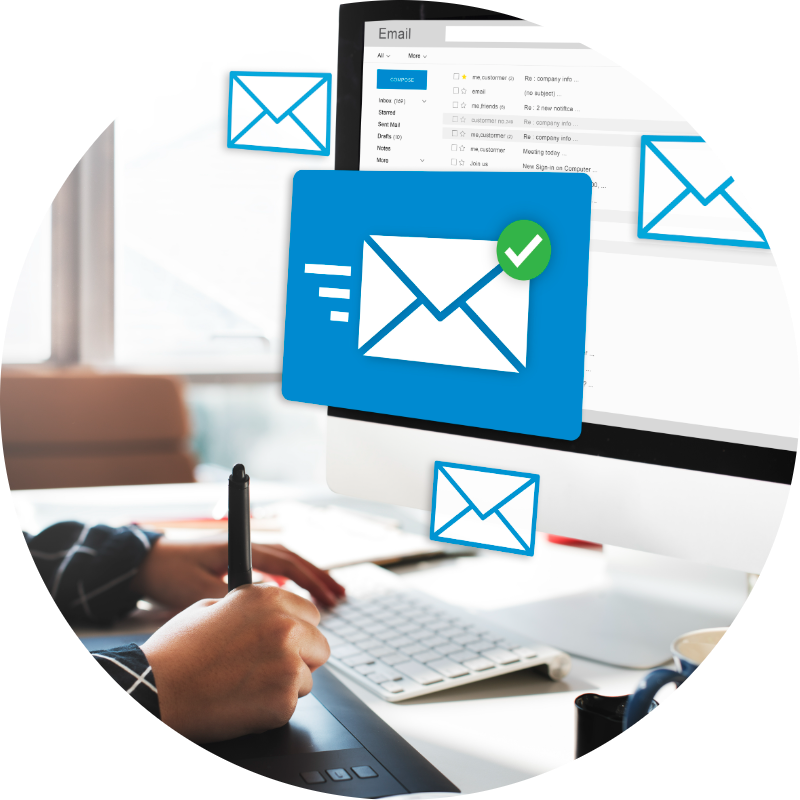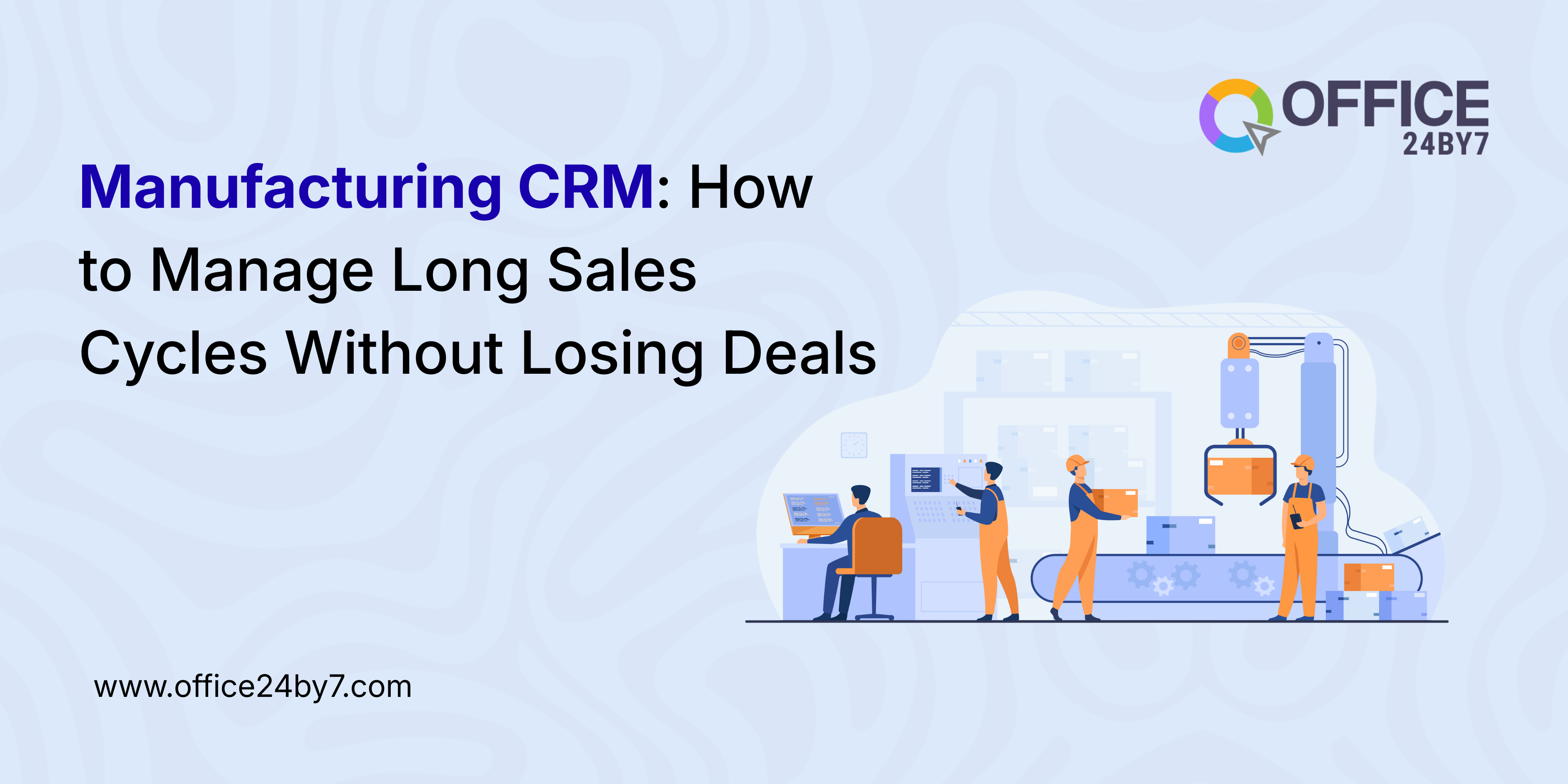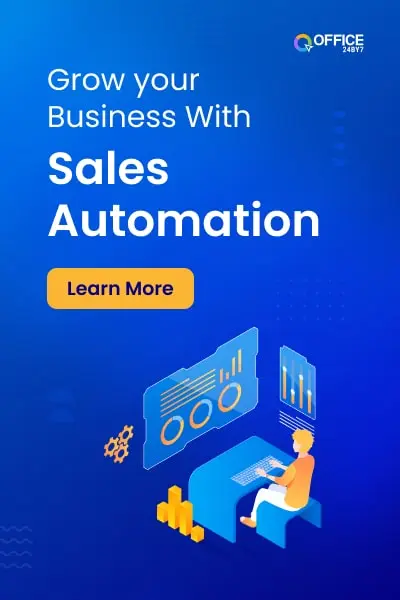
Not sure if this blog on Email Marketing Strategies for Business contains quality information?
Try our 1-minute short audio summary to decide. 🎧
Why Do You Need an Email Marketing Strategy For Business?
Email remains a powerful digital communication tool, despite being the oldest form. Channels like social media and live chat have their strengths, but personalized emails that meet specific goals can significantly impact the user’s inbox. The effectiveness of email marketing for businesses lies in customization and targeted messaging that resonates with the audience.
With the right email marketing strategy, you can connect with your target audience on their level, ensuring high-quality content. Regardless of the type of email sent, maintaining communication without compromising content quality is key. This approach fosters better engagement and strengthens customer relationships, driving success in your campaigns.
An email marketing strategy for business sets goals and directs the approach for sending promotional and regular emails. For instance, a well-crafted content strategy can enhance clicks and boost sales, especially in niche areas like book marketing services. Strategic planning in email marketing leads to measurable improvements in campaign performance.
Achieving set goals within a desired time frame can also reduce cart abandonment. A robust email campaign can recover lost sales effectively. Email marketers must continually evaluate their campaigns to ensure they align with their strategic objectives and maximize their potential for success.
Customized email campaigns tailored to specific audience segments can lead to higher engagement and conversion rates. By focusing on personalized messaging, marketers can make their emails more relevant and impactful. This personalized approach not only enhances user experience but also drives better results.
Your Email marketing strategies for business should be continually refined to adapt to changing customer preferences and market trends. Regular assessment and optimization of email campaigns help maintain their effectiveness. Staying updated with best practices and incorporating new tactics ensures that email marketing remains a valuable tool in digital communication.
Let’s Create Your Email Marketing Strategy From Scratch!
1. Define Your Email Marketing Goals
Establishing clear and measurable goals is essential for crafting an effective email marketing strategy for business. By defining specific objectives, you can align your email campaigns with your company’s mission and track progress efficiently. This approach ensures your efforts are purposeful and contribute to overall business success.
When setting email marketing goals, consider key performance indicators (KPIs) such as open rates, click-through rates, conversions, and engagement. Additionally, think about qualitative objectives like building brand awareness, nurturing customer relationships, and establishing your company as a thought leader. These elements are vital for a comprehensive strategy.
Your goals might include increasing course enrollments, boosting webinar attendance, or driving traffic to blog posts. Ensure these goals adhere to the SMART criteria—Specific, Measurable, Achievable, Relevant, and Time-bound. This framework sets a solid foundation for a successful email marketing campaign and ensures clarity in your objectives.
As you define your goals, consider your buyer personas and their specific needs. Aligning your objectives with your audience’s interests and pain points enables you to create resonant email content. This strategy drives meaningful engagement and propels your business toward success, fostering stronger customer connections.

Related Reading
2. Identify and Create Your Ideal Buyer Personas
Creating your Ideal Customer Profile (ICP) is a crucial step in refining your email marketing strategies for business. Many marketers waste valuable resources by targeting the wrong companies and people, often due to a lack of precise targeting. In the early stages, companies experiment to identify the best customer fit, but as they grow, the collaboration between Marketing, Sales, and Finance often diminishes, leading to less effective targeting.
An ICP helps businesses focus their efforts by identifying the customers that offer the highest potential for a strong return on investment. By understanding the specific needs, desires, and behaviors of these ideal customers, marketers can create personalized and impactful email campaigns. This approach ensures that marketing efforts resonate with the right audience, leading to better engagement and conversion rates.
When creating a buyer persona for email marketing, focus on the following specific areas:
- Demographic Information: Age, gender, income level, education, job title, and location.
- Professional Background: Industry, company size, role within the company, and career stage.
- Goals and Challenges: What are their primary goals? What challenges or pain points do they face?
- Buying Behavior: How do they make purchasing decisions? What influences their choices?
- Content Preferences: Preferred types of content (e.g., blogs, videos, case studies) and communication channels.
- Motivations and Value: What drives their decision-making process? What are their core values?
- Objections: Common reasons for hesitating or declining to purchase.
- Customer Journey: Where they are in the buying process and how they interact with your brand.
- Technical Proficiency: Their comfort level with technology and tools they commonly use.
- Feedback and Reviews: Insights from customer feedback and reviews that highlight their experiences and expectations.
3. Build an Email List
The goal of creating an email list isn’t just to accumulate addresses, but to build a community of actively engaged individuals with a high probability of conversion. Regularly clean your list by removing inactive email addresses and segregating them into a secondary list. This secondary list can be used for re-engagement campaigns, ensuring your primary list remains highly responsive and valuable.
This approach in email marketing strategies for business leads to more engaging interactions and higher conversion rates. To begin, add opt-in forms to your website or landing page, ensuring users provide direct consent to receive marketing content in their inboxes.
When creating effective opt-in forms, keep headlines concise and clear. Offer a lead magnet, such as an e-book or newsletter, as a valuable solution to customers’ problems. To increase form completion rates, only request essential information. Include attention-grabbing calls-to-action (CTAs) tailored to your specific audience to encourage signups.
Expand your reach by utilizing various signup methods. Implement forms on your website, use strategic pop-ups, collect physical signup sheets at events, and promote email list signups through your social media channels. This multi-channel approach can help you capture interested leads from different touchpoints.
Step-by-Step Process for Creating an Email List
- Step 1: Add opt-in forms to your website, strategically placing them on landing pages and relevant sections
- Step 2: Craft clear, concise headlines that quickly capture visitor interest
- Step 3: Offer a compelling lead magnet (e.g., e-book, newsletter) to incentivize signups
- Step 4: Keep forms short by requesting only essential information
- Step 5: Design effective CTAs that resonate with your target audience
- Step 6: Implement signup forms and strategic pop-ups on your website
- Step 7: Collect email addresses through physical signup sheets at events or in-store
- Step 8: Leverage social media channels to promote and share your signup form
4. Segment Your Subscribers
Segmentation is a top initiative for email marketers this year because it allows for more targeted email campaigns. By segmenting your database, you can tailor your messages to specific audiences, increasing relevance and engagement. For example, if you’re hosting a networking event for small business owners within a 20-mile radius, segmentation ensures your invites reach the right people.
To maximize turnout, create a segment of small business owners within the desired location and send them personalized invites. This targeted approach, easily managed through CRM software, is far more effective than blasting a generic email to your entire database. Receiving irrelevant event invites, especially from distant locations, can be frustrating for recipients.
So before you begin with the task of segmenting your database, let’s see how valuable it can be.
Segmenting your email lists leads to better open rates, revenue, leads, transactions, and customer acquisition. Research from Campaign Monitor shows that segmented email campaigns can result in a staggering 760% increase in company revenue. Segmentation also aligns well with GDPR compliance, making it a powerful tool in modern email marketing.
Does segmentation really work? Absolutely! In a recent test, we sent two identical email campaigns—one to a non-segmented list and another to a segmented list based on interest. The non-segmented email achieved a 45% open rate and a 4.9% click-through rate, while the segmented email saw a 96% open rate and a 39% click-through rate. Despite its effectiveness, surprisingly, 9 out of 10 email marketers still don’t segment their databases.
Do you have CRM software that can do this segmentation all by itself? Try Office24by7.
Let’s start segmentation with these:
- Demographics
- Previous campaign data
- Preferences and interests
- Purchase history
- Behavior and engagement
- Stage in sales-cycle
- Geographic location
- Job role
- Email engagement history
5. Plan and Create a Schedule for Your Email Campaigns
To structure effective email campaigns, start by planning your email frequency and timing. Establish a balanced schedule to maintain regular communication without overwhelming your audience. Consider factors like working days, holidays, important events, business seasons, and more to optimize engagement and ensure your emails reach recipients at the most opportune moments.
Next, create an email content calendar. Outline your content plan, including topics such as upcoming webinars or course updates, formats like newsletters or announcements, and CTAs like “Enroll Now” or “Download Free Resource.” This approach ensures consistency, aligns with your marketing goals, and helps identify opportunities for cross-promotion and collaborations.
An Email Marketing Solution
From The Future!

6. Craft Engaging Content for Your Emails
Content is the king! Investing in content marketing yields great returns. Crafting valuable and relevant content may be challenging, but it’s achievable. To create engaging email content, offer practical insights or exclusive resources like lesson plan templates, study guides, or parent guides. These resources enhance your audience’s learning experience and address their needs effectively.
Be concise and clear in your emails. Use simple language and avoid jargon to make your content easily digestible for a diverse audience, including those new to the concepts. Clear communication ensures that your message resonates with all readers, increasing the effectiveness of your email campaigns.
Incorporate visuals to enrich your emails. Use images, infographics, or GIFs to illustrate educational tools, demonstrate platform features, or explain complex concepts. This not only breaks up text but also creates a visually appealing email that captures attention and enhances understanding of your content.
Various forms of email campaigns to leverage:
- Welcome email campaigns
- Newsletters
- Promotional offers
- Educational content and tips
- Re-engagement campaigns

Related Reading
Include clear calls-to-action (CTAs) to guide your readers toward the desired outcome, whether it’s signing up, downloading a resource, or engaging further with your brand. Tailored content is key to driving higher engagement and customer retention.
Tip 1: Utilize a multi-channel marketing approach to maximize your reach. Leverage social media to build a community, and use email for loyalty programs and personalized recommendations. This diversified strategy can amplify your message and engagement across different platforms.
Tip 2: Maintain a strong domain reputation by closely monitoring your campaigns. Identify issues early through performance trackers, keep your email list clean, and avoid common spam triggers. This proactive approach can help minimize spam reports and ensure your messages reach your target audience effectively.
7. Spend Time Creating Great Subject Lines
The effectiveness of your email marketing strategies for business hinges heavily on the subject line. It’s the first thing recipients see and can make or break whether they open your message. In fact, a staggering 69% of people identify emails as spam based solely on the subject line.
Crafting compelling subject lines that pique curiosity, offer value, or generate excitement is crucial. However, it’s important to avoid spammy or clickbait tactics, as these can lead to unsubscribes and harm your sender’s reputation. A strategic, personalized approach to subject lines can significantly improve open rates and engagement with your email campaigns.
Tip: You can check the spam score of your emails by using any online software like https://www.mail-tester.com/ (not recommending).
8. Personalize Your Messages
Personalized email marketing is not about sending an individual email to every single subscriber. Rather, it’s about using customer data to create tailored messages that resonate with each recipient. Instead of a generic “Dear valued customer,” the email can address the reader by name, such as “Dear Mike.” Similarly, product recommendations can be based on the recipient’s purchase history, rather than randomly generated.
Email marketing is a crucial component of the overall customer experience, not just another marketing channel. In fact, more than 35% of all product sales come from recommendations, both via email and on-screen. This channel is expected to generate $17 billion in revenue by 2027, and personalization plays a significant role in driving these results.
In a study conducted it was found that personalized emails deliver 6 times higher transaction rates. This translates to real revenue opportunities. Research has shown that email marketing generates $0.08 in revenue per email. For a campaign with 500,000 subscribers, this can result in up to $40,000 in revenue. With personalization, the potential increases significantly, as people are 82% more likely to open emails that are customized for them.
The best part is that 70% of brands do not use personalization within their email marketing strategy for business. This means that by incorporating personalization, you can significantly stand out from the competition. Even a simple tactic like addressing the recipient by name can increase open rates by 10-14%. By leveraging the power of personalization, email marketing can become a highly lucrative revenue stream for your business.
Given that 47% of all emails are opened based solely on the subject line, it’s clear that crafting compelling subject lines is crucial for driving engagement. This presents a surefire way to get more eyeballs on your email campaigns.
Tip 1: When it comes to personalization, it’s important to start building the right foundation from the very beginning. This means asking for the necessary information upfront, such as the customer’s name, company, and location, during the sign-up process. However, it’s crucial only to request the data you truly need, rather than everything you want, in order to comply with regulations like GDPR.
Tip 2: Using a real, active reply-to email address instead of a generic “do-not-reply” address can significantly improve the authenticity and credibility of your messaging. This encourages readers to engage and respond to your campaigns, fostering a more personal connection. Similarly, including a real email signature with your contact information allows recipients to reach out and build a stronger relationship.
Tip 3: Lastly, it’s important to avoid using generic, impersonal language in your emails. Incorporating the recipient’s name, as well as other relevant personalization elements, can increase open rates by 10-14%. By leveraging these personalization tactics, you can significantly enhance the effectiveness of your email marketing strategies for business and stand out from the competition.
9. Test Copy, Design and Buttons
Testing is a powerful tool that provides valuable insights, helping you make informed decisions about what resonates best with your audience. It allows you to gauge the effectiveness of your content and design from the audience’s perspective, similar to how you would test landing pages or ad copy. A/B testing your emails is an essential step in optimizing them for better engagement and results.
You can begin by A/B testing different subject lines to see what grabs your audience’s attention. The graph below illustrates how testing various elements of your email campaign can lead to refined and more effective strategies. By sending multiple variations of your emails to a sample group of subscribers or customers, you can compare outcomes to your expectations and identify what works best for each buyer persona. This approach enables you to tailor future campaigns for optimal results.
But it’s not just subject lines you can test. Consider testing the following:
- From Address: Experiment with the “From” field by using different variations, such as a person’s name, a combination of the name and company, or even referencing C-level executives. Testing these options will help you discover which approach resonates most with your audience.
- HTML vs. Plain Text: While plain text emails are great for concise communication, don’t overlook the potential of HTML campaigns. HTML emails offer visually engaging content, which can be particularly effective for specific audiences or purposes.
- Short vs. Long Emails: Short emails are appealing because they’re quick to read, though they limit the amount of content you can share. In cases where detailed or complex information is necessary, long-form emails may be more appropriate. The best way to determine what works is by testing both formats.
10. Send Your Emails at the Right Time
Timing is crucial when sending emails. Your customers are likely checking their emails at various times, across different time zones, making a one-size-fits-all approach ineffective. If you send your email at the wrong time, it could get lost in the flood of other messages. To maximize engagement, analyze your subscribers’ behavior to determine when they are most active and what times yield the best results.
For instance, while most emails (about 53%) are opened between 9 am and 5 pm, excluding lunchtime, emails sent between 4:00 am and 8:00 am surprisingly have a high 33% transaction rate. Understanding these patterns can significantly boost your email marketing strategies for business.
Minimize your work efforts with automations!

11. Send Mobile Friendly Emails
Timing plays a critical role in email marketing. Since your customers check their emails at different times and across various time zones, a one-size-fits-all strategy won’t be effective. If your email lands at the wrong time, it might get buried under other messages. To enhance engagement, it’s essential to study your subscribers’ habits and identify the times when they are most likely to open your emails.
For example, while around 53% of emails are opened between 9 am and 5 pm, excluding lunch hours, emails sent between 4:00 am and 8:00 am show a surprisingly high transaction rate of 33%. Recognizing these trends can greatly enhance the effectiveness of your email marketing campaigns.
And how are you going to optimize your campaigns for mobile devices? Don’t worry, we got that covered as well.
Let’s start here:
- Responsive Email Design (RED): Ensure your emails are designed responsively so they deliver an optimal user experience on any device or screen size. Most email service providers (ESP) include this feature within their email tools.
- Keep Subject Lines Short: The subject line is key to grabbing attention. Keep it brief, ensuring that your audience immediately understands what the email is about.
- Use Larger, Clear CTAs: With mobile devices varying in size, a text link might work on larger screens but could be less effective on smaller devices or for users with larger fingers. Designing a clear, easily clickable CTA button is essential for improving user interaction.
12. Track Your Metrics
Tracking your metrics is vital for refining your email marketing strategies for business. Just as analyzing your audience is crucial before launching a campaign, understanding the performance of your emails post-send is equally important. Monitoring key metrics such as open rates, click-through rates, and conversion rates allows you to fine-tune your approach, ensuring your emails are effective and resonate with your audience.
Don’t have email marketing software that can help you track and analyze the performances of your email campaigns? Needless to say, email marketing software can become a huge burden when they are not functional or difficult to integrate with your CRM system. Top enterprise software providers like Office24by7 provide email marketing software that can be easily integrated with your existing CRM software or if you do not have one, they can also help you with their state-of-the-art CRM software which comes with an inbuilt cloud telephony service that supports omnichannel communications as well. Try office24by7 email marketing software for the best dashboard that can help you track and analyze your email campaign performance.

Related Reading
13. Build and Maintain a Healthy Email List
You may have a huge email list of all your potential customers and current customers but growing your list with new potential customers is a key factor when it comes to quality engagement. If your subscribers aren’t engaging then the list is not healthy.
Email marketing at its core is more engagement-oriented than any other form of marketing for example social media marketing. You may engage with your customers on various channels where they are more active but the entire flow comes into your desired path when you are able to bring all these customers from various platforms onto one standard platform that is emails. This is why you need to build your email list.
Here are the KPIs for a great email list:
- Stable or increasing Open rates and Click-through rates.
- Highly segmented database.
- The ability for campaigns to send personalized emails.
- Stable or decreasing List decay rate.
Now that you know where your email list stands in contributing to your email marketing strategies for business and your overall ROI, let’s discuss some of the actions to undertake to achieve these:
1: Provide Visible Opt-ins
In order to get quality engagement you need to ensure that all the people on your email list want themselves to be there. Providing them with a clear and visible email opt-in can reduce your % of inactive subscribers.
2: Create Enough Sign-up Forms
Sign-up forms are the easiest way to gather potential customer data. You can circulate them effectively on your webpages, or landing pages that are focussing on a single topic and not confusing them, or sharing the link via social media, etc.
Using a form can also help you to gather the personal information of the customer so that you are not spamming them without knowing anything about them.
3: Gated Content
You can use gated content to refine your email list. Gated content is content that the audience can only access if they sign up for your list or are a part of the subscriber list. This can be certain pages on your website or some downloadable resources like a free guide or case study.
4: Provide Valuable Content
When it comes to building and maintaining a healthy email list the importance of quality content is often overlooked. Providing great content for topics that the subscribers are interested in can improve engagement. Based on their engagement you can understand who all are interested in the topic and who are not.
This can also help your audience understand whether they should be subscribing to you. Therefore sending the same email to all your customers would only reduce your engagement if they are interested in yesterday’s topic but not today. This can also lead to unsubscription of people who are actually your potential clients.
14. Replying to Customer Email Responses
Responding to customer replies from your campaigns is crucial for maintaining effective email marketing strategies for business. It’s not just about creating and sending emails; it’s about continuing the conversation. Customers may have questions or concerns about your campaign, and timely responses can build trust and engagement. Ignoring these emails can lead to missed opportunities and a negative impression of your brand.
For instance, some customers might be ready to take the desired action, such as signing up or making a purchase, but hesitate if they don’t receive a prompt response. Delayed replies can make them question the reliability of your customer support. In email marketing, speed matters—address incoming emails as quickly as possible to keep your audience engaged and satisfied.
15. Automate Email Campaigns When Possible
Another important part of your email marketing strategies for business is automating the email process. Automated email campaigns provide timely responses to customer actions, enhancing engagement and communication. For instance, when a customer subscribes to your newsletter, an immediate welcome email can be triggered, outlining the benefits they’ll receive. This type of trigger-based email automation extends to various customer interactions, including thank-you messages, order confirmations, and receipts. By implementing these automated trigger emails, you ensure consistent, prompt, and relevant communication with your audience, improving their overall experience with your brand.
Triggered email marketing campaigns are automated messages that respond directly to users’ actions, ensuring relevance and timeliness. Unlike standard scheduled campaigns, triggered emails leverage user behavior to deliver content when the recipient is most likely to engage.
Triggered emails offer several key advantages, including higher open and click-through rates, greater relevancy, faster segmentation and scheduling, improved customer retention, and increased opportunities for sales, upsells, and data gathering. These benefits make triggered campaigns a powerful tool in any marketing strategy.
- Higher open rates
- Higher click-through rates
- Higher conversion rates
- Greater relevancy
- Faster segmenting and scheduling
- Greater customer retention
- Increased opportunities to sell, upsell, and gather data
Below is a comparison of our traditional email campaign (left) against our triggered email campaign (right):
But setting up triggered emails is expensive and complex, isn’t it?
It doesn’t have to be. You can start by using auto-responders in your customer service software to replicate the automation aspect. That’s what we do for all of our existing triggered emails and we’re happy with it.
Here are some examples of trigger emails you can send:
- Activation Campaigns: Send automated emails to new users with login details, step-by-step instructions, and video tutorials. These emails help users get started quickly, providing essential information and support to ensure a smooth onboarding process and encourage active engagement with your product or service.
- Win-back Campaigns: Target customers approaching the end of their subscription with personalized emails. Highlight new features, outline upcoming releases, and offer customer support assistance. This strategy aims to retain customers by demonstrating ongoing value and addressing any concerns they may have about continuing their subscription.
- Surprise Reward Campaigns: Delight your best customers with unexpected perks through automated emails. Offer free yearly software licenses, gift cards, or exclusive coupon codes. This approach fosters customer loyalty, encourages continued engagement, and creates positive word-of-mouth marketing for your brand.
Wrap Up
There are over 4.6 billion email users in the world according to Statista report 2023. This adds up to 347 billion emails sent and received daily. You can leverage this popularity and monopoly of one communication channel so that your business can grow and scale as desired. Using email marketing strategies for business as devised in this guide so that you are also seething an average return of $42 for every $1 spent on your email marketing efforts.
Get in touch with Office24by7 and learn more about how you can set up an email marketing campaign to achieve this. Fill out the “Get a Demo” form to the right or call us at +917097171717. You can also send an email to our sales team at sales@office24by7.com.
Reorganize your office with Office24by7!






